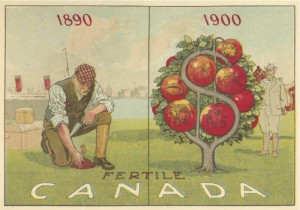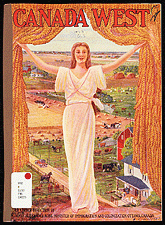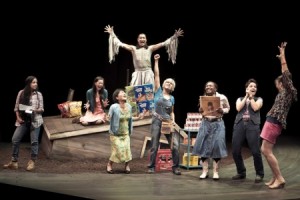3.What are the major differences or similarities between the ethos of the creation story or stories you are familiar with and the story King tells in The Truth About Stories ?
Funny I should stumble upon this topic again. At the beginning of The Truth about Stories King points out a story close to him (about his mother) but also a creation story concerning a woman falling from the sky.
As I have said in previous blog posts, I am a Metis person who was raised under the Christian faith. Therefor I was prominently exposed to the story of Adam and Eve and for some reason I have always found it extraordinarily fascinating even as a small child. Upon further reflection (which this course has made me ponder) I have become more and more interested in other creation stories.
I was able to find several similarities between the Eden story as well as the creation story of the woman falling from the sky. Foremost and most prominent would have to be the emphasis on women, which may be due to the idea of reproduction and the ancient beauty ideal of fertility. The idea of a women in nature is beautiful but also hopeful and offers a sense of paternity and fertility. In both stories the women were “curious”. In King’s telling of Charm’s creation story “She was more nosy. Curious. The kind of curious that doesn’t give up”(King,10). Both stories occur due to the women’s curiosity. I find it interesting that Eve’s curiosity causes the downfall of all of mankind yet Charm thrives due to her curiosity. Charm’s curiosity is what led her to find earth in the first place and then try new things once she reaches earth, which led to her fall to earth and the establishing of earth.
A prominent difference which is notable is the differences in interaction with nature in both stories. Charm is in cohesion with nature, she communicates with animals which is how she discovers new things. In the garden of Eden Eve is restricted upon the nature she may interact with and the idea of “forbidden” ness is introduced. The only animal she talks to is the serpent who we find out later is a representation of Satan. A representation of the different interactions with nature, which may reflect both cultures.
As there are many differences and similarities I think the stories show more similarities than they do differences, although the differences included are quite significant. I think one of the most notable concerns is the different approaches to nature. Within the Eve story it almost feels as though the earth has been gifted Adam and Eve, where as within Charm’s story it seems as though charm believes the nature is the gift and that she must learn to live in cohesion and with respect to the nature. It is interesting that both cultures place high value upon women at the initial state of the world which they are creating.
Bibliography
King, Thomas. The Truth About Stories. Minneapolis: University of Minnesota Press, 2005. Print.



